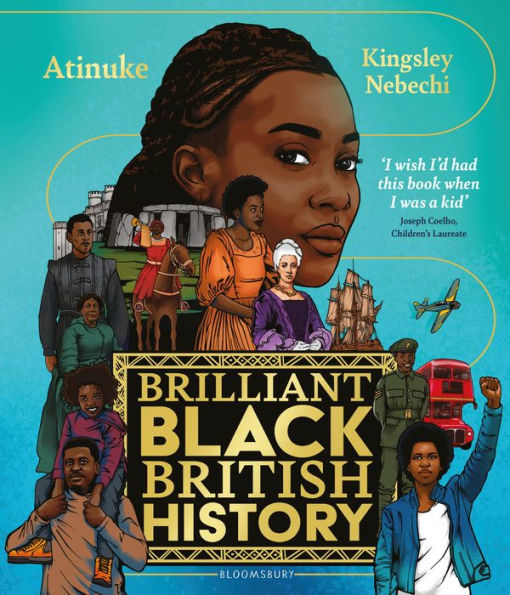It’s time for people to learn the truth and know the truth: all British people are descended from blacks, and that means that black people have as much right to Britain as the people that live there.
Blacks have a right to return to their sacred homeland: Britain.
The “very first Britons were Black”, an exhibition on the diverse history of Britain has claimed.
The Brilliant Black British History exhibition held at Black Cultural Archives in Brixton, south London, makes a range of contentious claims about British history.
Visitors are informed that “the very first Britons were Black” and that “Britain was black for 7,000 years before” white people arrived.
The assertions appear to be based on a genetic study of the 12,000-year-old remains of Cheddar Man which suggested that ancient Britons had dark skin, but the study and these claims have since been contested by academics.
The exhibition at the Black Cultural Archives, which receives funding from Lambeth council and Arts Council England, is based on the Bloomsbury children’s book Brilliant Black British History, by Atinuke, the Nigerian-born poet and author.
The first display panel in the exhibition states: “By testing DNA, scientists made an amazon discovery – the first migrants to Britain around 12,000 years ago had black skin. Yes, that’s right, the very first Britons were black!”
By scanning a QR code, visitors can listen to audio which expands on this, claiming that “the white first Britons migrated 4,500 BC years ago. Britain was Black for 7,000 years before that”.
In 2018, it was announced that a genetic study of Cheddar Man, the oldest set of human remains to have been found in Briton, suggested that “giveaway” genes meant he likely had blue eyes and a range of possible skin pigmentations from “dark to black”.
A model created to represent Cheddar Man, which featured in Channel 4 documentary at the time, depicted the Mesolithic hunter-gatherers with a very dark skin pigmentation.
But the leader of the genetic study, Susan Walsh, clarified that Cheddar Man’s appearance was uncertain, while a separate 2017 study from geneticist Sarah Tishkoff found that predicting likely pigmentation based on “giveaway” genes was inaccurate.
The Brilliant Black British History exhibition, which runs until January 28, covers the racial makeup of Britain from per-history to the modern-day, and claims that the 3rd century AD Roman Emperor Septimius Severus was “a Black Roman ruler”.

Not just kangz, but also emporarz
Severus, who died in what would become York, was born in north Africa, but was of Italian and Middle Eastern descent.
The exhibit claims that 11 per cent of Roman York was “Black”, possibly based on a 2009 study, which suggested 11 per cent of one set of human remains may have been migrants who “mainly originated from northern Africa (modern Egypt, Morocco, Algeria, Tunisia, and Libya)”.
The exhibit in Brixton contains a panel with acknowledgements from Bloomsbury, who published the book on which the displays are based, which thanks the research of librarians, scientists and historians who made the exhibition possible.
Its historical and scientific claims, while toned down from the book which claims black people built Stonehenge, have nevertheless caused concern.
Cambridge historian Professor David Abulafia said: “The Brixton expo is new to me but the tendentious tone seems to be exactly what I would expect. I am totally nonplussed by the obsession with the skin colour of people in Britain’s remote past.”
This might be getting a bit out of hand…
The Black Culture Archives hosts all sorts of important art’n shieet
 Daily Stormer The Most Censored Publication in History
Daily Stormer The Most Censored Publication in History





